Said to hold a cargo of gold, silver, and jewels worth up to $20 billion today, the San José shipwreck has sparked legends and controversy ever since the vessel sank in 1708.
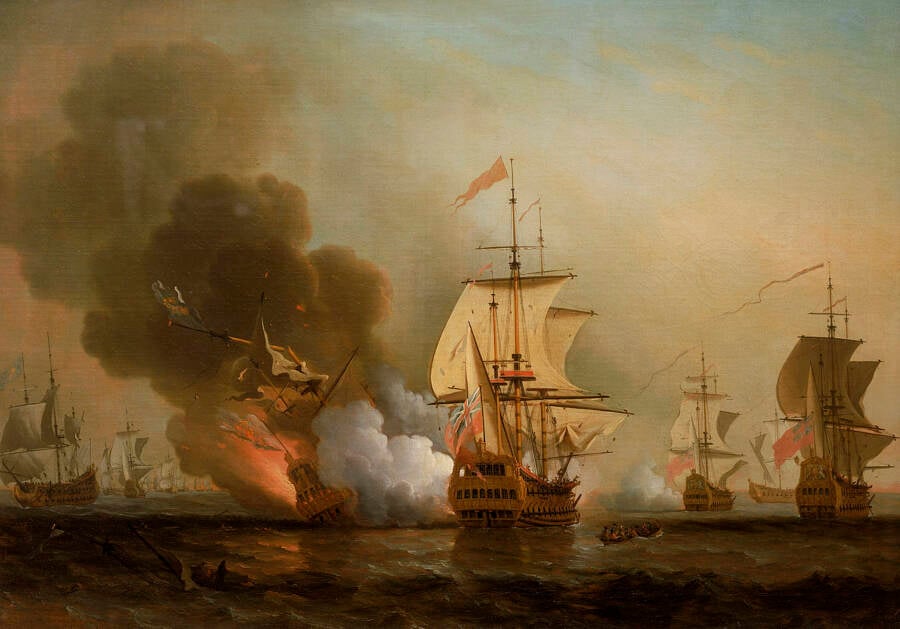
Wikimedia CommonsA depiction of the Spanish galleon San José (center left) exploding during Wager’s Action in 1708.
Deep beneath the Caribbean waters off the Colombian coast lies the Spanish galleon San José, a once-floating fortress that met its demise after being attacked and sunk by the British in 1708. At the time, the ship was said to be carrying a massive cargo of gold, silver, jewels, and other goods to help the Spanish king pay for his war against the British.
The San José shipwreck and the fortune it was allegedly carrying have been estimated to be worth as much as $20 billion in today’s money. It isn’t hard to see why so many treasure hunters set their sights on exploring the San José, or why it earned its title as the “holy grail” of shipwrecks.
Countless people and organizations conducted surveys to try and locate the San José shipwreck over the years. It wasn’t until 2015 that the Colombian Navy finally found the San José with the help of an autonomous underwater vehicle, but even with the discovery made, several questions remained.
For starters, no one could agree on who actually owned the sunken galleon. Was it now Colombian property, given that they were the ones who found it? Or did it belong to Spain, since it was a Spanish vessel? Or how about Indigenous groups in Bolivia and Peru, who say that most of the treasure would’ve been plundered by the Spanish from mines in the Andes?
Meanwhile, others have questioned whether the site should be explored much at all, considering it’s a war grave and hundreds of lives were lost when the ship went down. It’s also worth noting that it’s unclear exactly how much of the treasure has survived. Ultimately, the future of the San José shipwreck is uncertain, but its historical significance most definitely is not.
A Ship Built For An Empire
From the beginning, the San José was no ordinary vessel.
Constructed around 1698, the imposing 64-gun galleon represented the pinnacle of Spanish naval engineering. Measuring about 150 feet long, with multiple decks, it was designed to handle warfare and transporting cargo — particularly the wealth flowing from New World mines back to Europe.
For a long time, Spain’s American empire had been the envy of much of Europe. The Spanish took silver from present-day Bolivia, extracted gold from modern-day Colombia, and uncovered emeralds from the Andes.
And the San José, the flagship of the Flota de Tierra Firme, was entrusted with possibly the most valuable cargo ever loaded onto a single ship.
In May 1708, the San José departed from Portobelo, Panama, en route to Spain. It was said to be packed to the brim with treasure: chests of gold doubloons, bars of silver, bags of uncut emeralds, and other items. While the exact inventory has been lost to history, colonial records suggest the official cargo alone included up to 200 tons of precious metals and stones.

Public DomainKing Philip V of Spain was supposed to receive the treasure loaded on the San José.
That said, unofficial estimates — accounting for the contraband that Spanish colonists routinely smuggled on their ships to avoid taxation — suggest that the actual treasure may have been even greater. Some have even claimed it was “the biggest treasure in the history of humanity.”
For Spain, though, the treasure was also a lifeline. The nation was embroiled in the War of the Spanish Succession, a brutal conflict that had European powers battling over who would inherit the Spanish throne.
“Britain and her allies wanted to curb the power of the French and Bourbons,” Ann Coats, an associate professor of maritime history at the University of Portsmouth in England, told HISTORY in an interview. “Britain’s Royal Navy needed to control the Atlantic to protect its merchant trade coming back from the Americas.”
King Philip V of Spain desperately needed the treasure to pay his armies, finance his fleet, and maintain his claim to the crown. Essentially, this meant that the San José was carrying the fate of the empire when it departed.
The Tragic Sinking Of The San José
On June 8, 1708, as the San José and its fleet sailed near Cartagena, preparing to return to Europe, lookouts spotted their sails. A British squadron under Commodore Charles Wager had been lying in wait.
The British forces, which were allied with other countries like the modern-day Netherlands against the rise of King Philip V in Spain, hoped to capture the presumed treasure onboard the San José and bring it back to England.
Before long, Wager’s ships closed in. The San José moved to engage the British vessels, but what happened next isn’t entirely clear. According to Vanity Fair, commands were shouted, cannons were fired, and, as the air was thick with smoke and the smell of gunpowder, disaster struck.
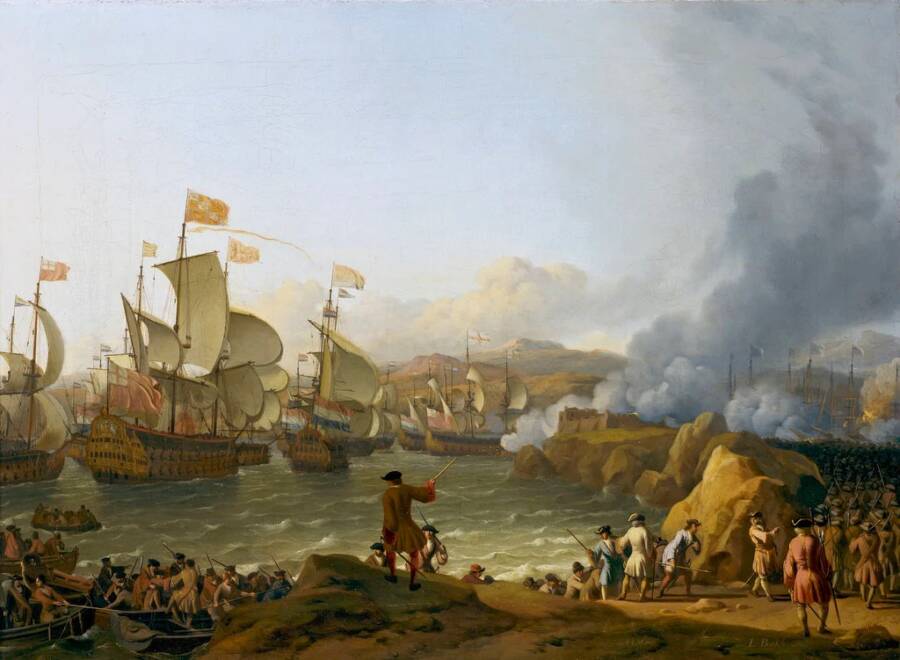
Public DomainThe War of the Spanish Succession made the ship’s cargo invaluable to King Philip V.
Suddenly, the San José’s powder magazine ignited amidst the ambush by the British. The explosion was catastrophic, and some witnesses claimed that the fireball could be seen for miles. The ship broke apart and plunged to the ocean floor in moments, taking with it approximately 600 souls — sailors, soldiers, and other passengers. Only 11 men survived.
The loss of such a massive cargo of valuables at sea sent shockwaves throughout the Spanish empire. With the San José went not only hundreds of lives, but also the financial resources that Philip V needed to continue his war. Some historians have even argued that the sinking directly influenced the war’s outcome, eroding both Spain and France’s power.
But in Spain and beyond, word also spread of the lost treasure, lying at the bottom of the ocean for anyone clever enough to discover it.
Centuries Of Searching For Spain’s Lost Treasure
For more than 300 years, the San José’s location remained one of maritime history’s greatest mysteries. Treasure hunters, both amateur and professional, combed the Caribbean searching for the legendary wreck and its fabled cargo — but the task was easier said than done.
Imprecise 18th-century navigation records, strong currents, and the vast expanse of potential search areas all compounded the difficulty.
It wasn’t until the 1980s that an American salvage company named Sea Search Armada claimed to have located the San José shipwreck and entered into agreements with the Colombian government. However, disputes over the terms of the agreements led to decades of litigation.
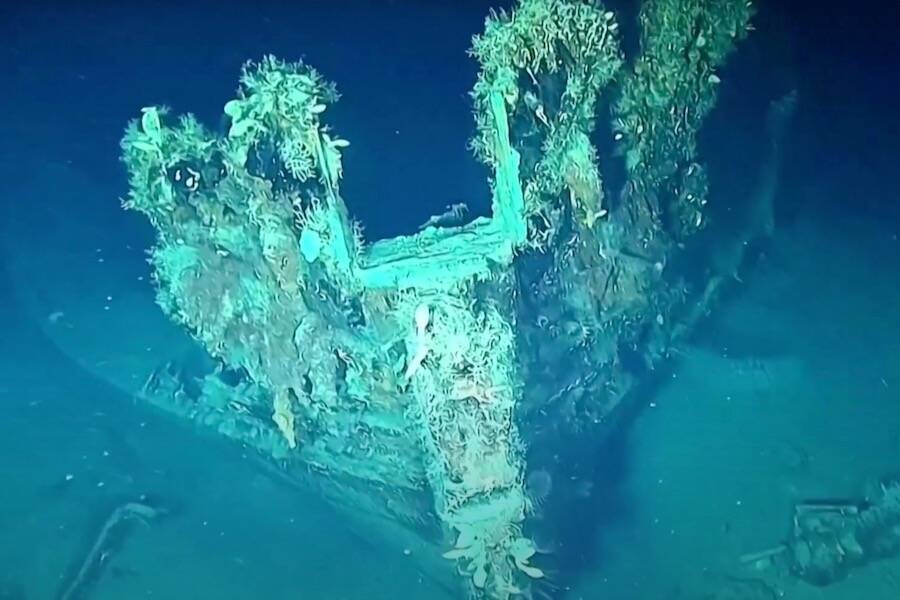
Armada de ColombiaThe Colombian Navy said that they discovered the “true” San José shipwreck in 2015.
As Ann Coats outlined in a piece for The Conversation, Sea Search Armada had proposed a 50-50 split of the proceeds from the wreckage, which Colombia would later contest. Eventually, in 2007, the U.S. Supreme Court determined that Colombia would be entitled to any artifacts that were declared to be “national cultural patrimony,” further complicating things.
But the story took yet another turn in 2015, when the Colombian government called Sea Search Armada’s findings into question.
Colombian president Juan Manuel Santos announced that the Colombian Navy had found the “true” wreckage, with the help of an autonomous underwater vehicle, British maritime archaeology consultants, and the U.S. Woods Hole Oceanographic Institution. Of course, they released few details about the exact location of the wreckage due to concerns about looters.
Given that estimates for the treasure’s value lay anywhere between $4 billion and $20 billion, it seemed as if the Colombian government had just earned itself a fortune. Except, it was unclear if they actually owned it.
The Ongoing Battle For The San José Shipwreck
Since 2015, a number of non-invasive campaigns have surveyed the sunken galleon, some details of which were published in the journal Antiquity in June 2025. Researchers reportedly found “hand-struck, irregularly shaped coins — known as cobs in English and macuquinas in Spanish,” which “served as the primary currency in the Americas for more than two centuries,” providing further evidence that this wreckage was the San José.
While it’s still unclear exactly how much of the vessel’s presumed treasure survived following the attack by the British and centuries of lying on the ocean floor, images released of the shipwreck have shown some promising clues, like gold coins, blue and white porcelain, and bronze cannons.
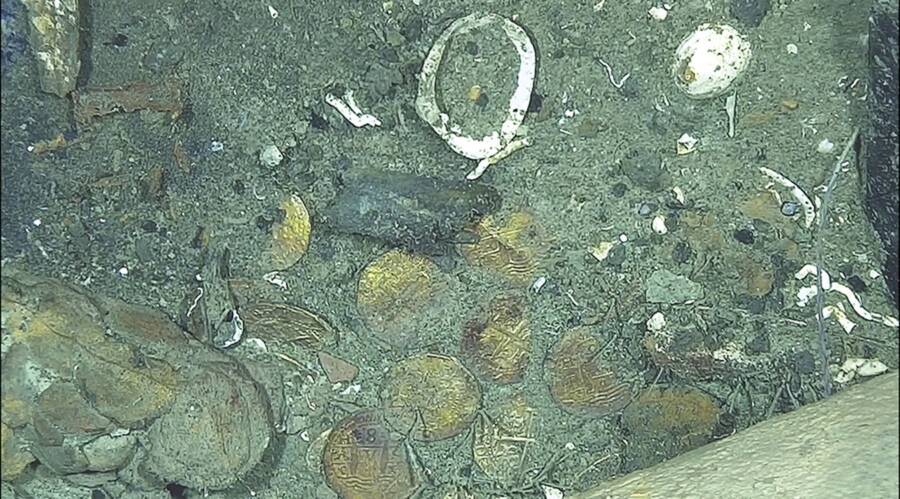
ARC-DIMAR 2022/Vargas Ariza et al. Antiquity 2025Coins from the San José shipwreck.
Beyond the potential monetary value, though, the wreck holds significant archaeological value, making the debate of ownership even more complex.
Colombia has claimed the San José, arguing that it was the Colombian Navy that discovered the wreckage and the vessel sank in Colombian waters. Spain, however, has countered that the San José was a Spanish naval vessel, and it should remain Spanish property. Meanwhile, Indigenous groups from Bolivia and Peru say they should receive at least some of the vessel’s treasure because much of it was plundered by the Spanish from mines in the Andes.
Throughout all of this, Sea Search Armada has maintained it discovered the wreck first and has contractual rights to a portion of its contents.
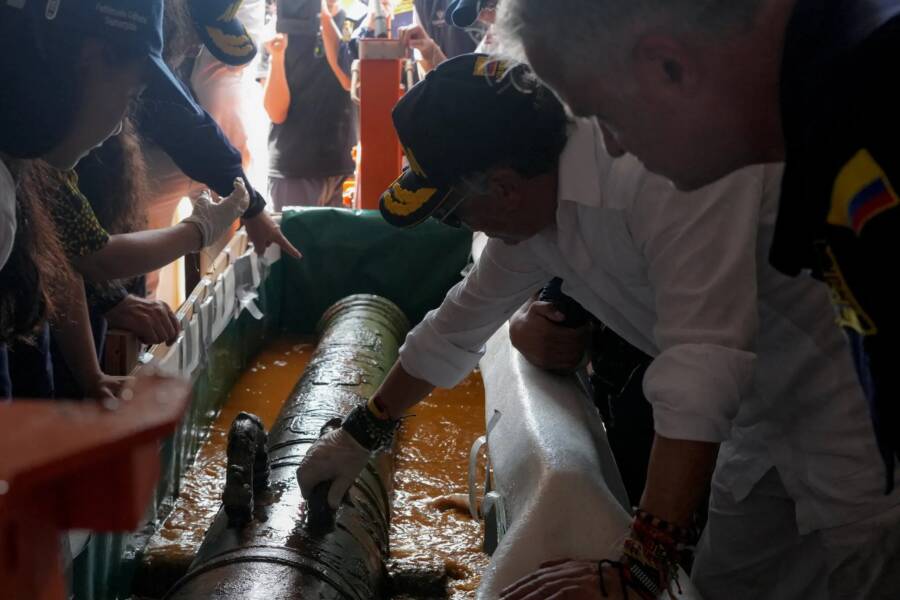
Colombian PresidencyColombian President Gustavo Petro examining a cannon from the San José shipwreck.
Yet others, including many archaeologists, think that the vessel should only be explored in a limited capacity on the ocean floor, considering the age of the treasure and the hundreds of lives lost when the ship went down.
The Colombian government has expressed interest in raising the wreckage and putting its contents on public display in a museum, but questions about recovery, preservation, and ownership are still somewhat unresolved. As of November 2025, only a handful of artifacts have been recovered from the San José, including a cannon, a porcelain cup, and coins.
For the time being, the San José itself remains on the ocean floor, its presumed treasure at least partly intact and its ultimate fate uncertain.
After reading about the San José shipwreck, see more famous shipwrecks from history. Then, go inside some frightening stories of ghost ships.





